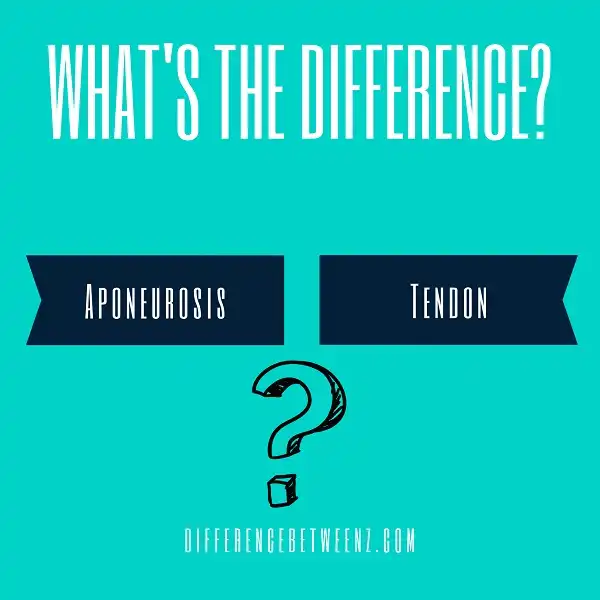The human body is an amazing machine. With over 600 muscles and tendons, it’s no wonder we can do some pretty incredible things. But what’s the difference between aponeurosis and a tendon? How do they work together to create movement? And why does it matter? Keep reading to find out!
What is Aponeurosis?
The aponeurosis is a type of connective tissue that covers the surface of a muscle. It consists of a layer of flat, fibrous tissue that helps to anchor muscles and tendons to bones. Aponeuroses are found in all areas of the body, including the hands, feet, and lower back. They are particularly important for stabilizing joints and providing support during movement. Aponeuroses can be injured through overuse or trauma, resulting in pain and inflammation. Treatment typically involves rest, ice, and stretches or exercises to strengthen the surrounding muscles. In severe cases, surgery may be necessary to repair the damage.
What is Tendon?
Tendon is a type of connective tissue that attaches muscle to bone. It is made up of collagen fibers, which are arranged in a parallel fashion and give the tissue its strength. Tendon is classified as a type of white fibrous connective tissue, which also includes ligaments and aponeuroses. Tendon is found in all animals with skeletal systems and plays an important role in movement.
- In humans, tendons are found throughout the body, including in the fingers, wrists, ankles, and knees. Tendonitis is a condition that occurs when the tendons become inflamed, often due to repetitive motion or injury. Treatment typically involves rest, ice, and physical therapy. surgery may be required in severe cases.
- Tendon grafting is a surgical procedure in which a healthy tendon is transplanted to an area where the tissue has been damaged. This can help to improve function and relieve pain. Tendon repair is a less invasive surgical procedure that involves suturing the damaged tendon back together.
- Tissue engineering is a rapidly growing field that holds promise for the future treatment of tendon injuries. In this approach, artificial tendons are created using biodegradable materials and cells from the patient’s own body. These artificial tendons can then be used to replace or repair damaged tissue. Tissue engineering represents a potentially major advance in the treatment of tendon injuries and other conditions affecting connective tissues.
Difference between Aponeurosis and Tendon
- Aponeurosis and tendon are two words that are often used interchangeably, but there is a difference between the two. Aponeurosis refers to a flat sheet of tendons that is attached to a muscle. On the other hand, a tendon is a rope-like structure that attaches muscle to bone. In other words, aponeurosis is a broad, flat tendon while a tendon is a cord-like structure.
- While they both attach muscle to bone, tendons are generally much thicker than aponeuroses. This is because tendons need to be strong in order to withstand the force of muscle contraction. Aponeuroses, on the other hand, are not under as much tension and can therefore be thinner.
- Another difference between the two is that tendons generally have a higher concentration of collagen fibers than aponeuroses. This is because collagen is a very strong protein that provides tendons with added strength and elasticity. Aponeuroses also contain collagen but in lower concentrations. There are numerous differences between aponeurosis and tendons, but the most notable ones are their shape, thickness, and collagen content.
Conclusion
The aponeurosis and tendon are both connective tissues in the body, but they have different functions. Aponeurosis attaches muscles to bones while the tendon connects muscles to other muscles or tendons. Understanding the difference between these two types of tissue is important for understanding how injuries occur and how they can be treated.


